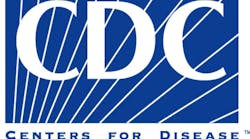FOR IMMEDIATE RELEASE
(Centers for Disease Control, Atlanta GA, July 9, 2021) -- This updated version of COVID-19 guidance for school administrators outlines strategies for K-12 schools to reduce the spread of COVID-19 and maintain safe operations.
Many schools serve children under the age of 12 who are not eligible for vaccination at this time. Therefore, this guidance emphasizes implementing layered prevention strategies (e.g., using multiple prevention strategies together) to protect people who are not fully vaccinated, including students, teachers, staff, and other members of their households. The guidance is intended to help administrators and local health officials select appropriate, layered prevention strategies and understand how to safely transition learning environments out of COVID-19 pandemic precautions as community transmission of COVID-19 reaches low levels or stops. This guidance is based on current scientific evidence and lessons learned from schools implementing COVID-19 prevention strategies.
This CDC guidance is meant to supplement—not replace—any federal, state, local, territorial, or tribal health and safety laws, rules, and regulations with which schools must comply. The adoption and implementation of this guidance should be done in collaboration with regulatory agencies and state, local, territorial, and tribal public health departments, and in compliance with state and local policies and practices.
Key Takeaways
- Students benefit from in-person learning, and safely returning to in-person instruction in the fall 2021 is a priority;
- Vaccination is currently the leading public health prevention strategy to end the COVID-19 pandemic. Promoting vaccination can help schools safely return to in-person learning as well as extracurricular activities and sports;
- Masks should be worn indoors by all individuals (age 2 and older) who are not fully vaccinated. Consistent and correct mask use by people who are not fully vaccinated is especially important indoors and in crowded settings, when physical distancing cannot be maintained;
- CDC recommends schools maintain at least 3 feet of physical distance between students within classrooms, combined with indoor mask wearing by people who are not fully vaccinated, to reduce transmission risk. When it is not possible to maintain a physical distance of at least 3 feet, such as when schools cannot fully re-open while maintaining these distances, it is especially important to layer multiple other prevention strategies, such as indoor masking;
- Screening testing, ventilation (see below), handwashing and respiratory etiquette, staying home when sick and getting tested, contact tracing in combination with quarantine and isolation, and cleaning and disinfection are also important layers of prevention to keep schools safe;
- Students, teachers, and staff should stay home when they have signs of any infectious illness and be referred to their healthcare provider for testing and care;
- Many schools serve children under the age of 12 who are not eligible for vaccination at this time. Therefore, this guidance emphasizes implementing layered prevention strategies (e.g., using multiple prevention strategies together consistently) to protect people who are not fully vaccinated, including students, teachers, staff, and other members of their households.
- COVID-19 prevention strategies remain critical to protect people, including students, teachers, and staff, who are not fully vaccinated, especially in areas of moderate-to-high community transmission levels;
- Localities should monitor community transmission, vaccination coverage, screening testing, and occurrence of outbreaks to guide decisions on the level of layered prevention strategies (e.g., physical distancing, screening testing).
Ventilation
Improving ventilation is an important COVID-19 prevention strategy that can reduce the number of virus particles in the air. Along with other preventive strategies, including wearing a well-fitting, multi-layered mask, bringing fresh outdoor air into a building helps keep virus particles from concentrating inside. This can be done by opening multiple doors and windows, using child-safe fans to increase the effectiveness of open windows, and making changes to the HVAC or air filtration systems.
- On July 9, CDC also released a new case study on the "Efficacy of Portable Air Cleaners and Masking for Reducing Indoor Exposure to Simulated Exhaled SARS-CoV-2 Aerosols."
During transportation, open or crack windows in buses and other forms of transportation, if doing so does not pose a safety risk. Keeping windows open a few inches improves air circulation.
For more specific information about maintenance, use of ventilation equipment, actions to improve ventilation, and other ventilation considerations, refer to:
- CDC’s Ventilation in Schools and Child care Programs
- CDC’s Ventilation in Buildings webpage
- CDC’s Ventilation FAQs and
- CDC’s Improving Ventilation in Your Home
Additional ventilation recommendations for different types of school buildings can be found in the American Society of Heating, Refrigerating, and Air-Conditioning Engineers (ASHRAE) schools and universities guidance document.
Funds provided through the Elementary and Secondary Schools Emergency Relief Programs and the Governors Emergency Education Relief Programs can support improvements to ventilation. Please see question B-7 of the U.S. Department of Education Uses of Funds guidance for these programs.
For much more, view the most current CDC schools guidance page here.










